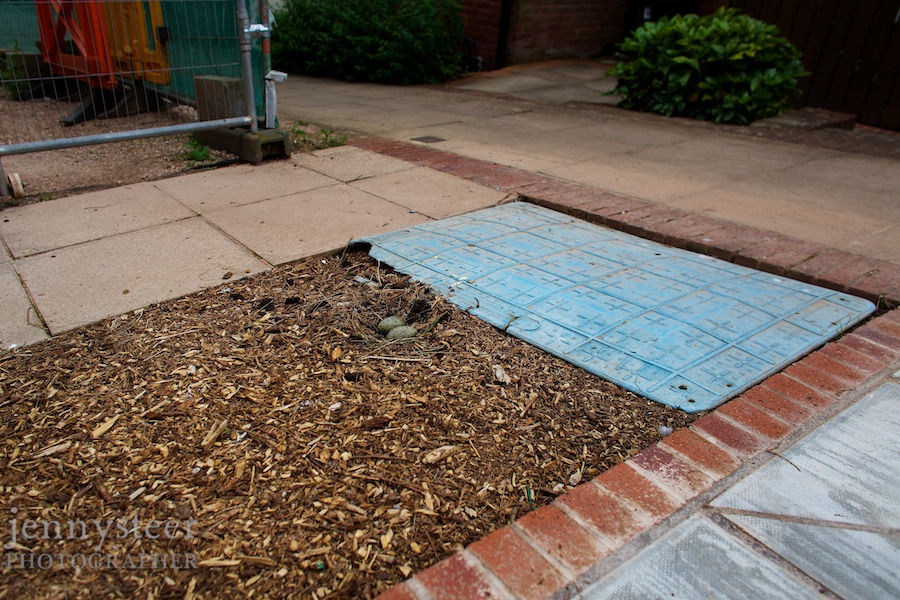Lesser blacked-backed gull – grounded in a very urban setting – Words and pics by Jenny Steer
I was astonished and absolutely touched to see the Lesser black-backed gull pair nesting on the ground right next to a main footpath and in the direct line of the builders working on a refurbishment where I live. Its position is precarious to say the least! I found it to be one of the most beautiful and vulnerable situations I had ever seen. The perfect nest cradling two stunning eggs camouflaged in amongst the wood chipping border. The nest almost touching the blue plastic runway put down for the builder’s wheel barrows.
Apparently, the gulls have been there for around 2 weeks. The one sitting on the eggs will leave the nest and fly up onto the roof when people walk by. However, I noticed a workman walk straight in front of her today and she didn’t move at all! Neighbours and workmen look on in respect and awe at the absurd setting. There is an empathy and admiration for these great creatures amongst people who otherwise might hold these birds in disdain.
For quite some time the Lesser black-backed gulls had been nesting on a nearby roof. However, the housing people have decided to replace the rooftops with anti-Gull ones. This in effect will not support a nest being built as it is too slippery. The new roof construction is also not eco friendly as it doesn’t allow for the little bits of moss and other small plantlife to grow and provide insect food for birds. Another pair of Lesser black-backed gulls have managed to make a nest in a tiny space at the meeting point of two roofs. It is such a small space that the gulls body overhangs the space! This is how desperate the gulls are to remain in their familiar setting.








by jenny steer
I think that paired-up gulls sometimes feed each other like that.
Thank you Linda for your post. It is great to have some connection with someone in America! Please could you send any photo’s you have for us to see. I have never seen a Laughing Gull!
Yes Phil, one adult feeds another at the beginning of the breeding season the female will beg food from the male in the same manner that the young do. It is all part of the courtship process. If you like you could be our Gull correspondent from Florida Linda it would be great to get pictures and positive stories from the USA!
Laughing Gulls are fairly similar in both size and appearance to Black-headed Gulls – but it’s darker. I’ve never seen one in real life myself. I gather that they’re very noisy too.